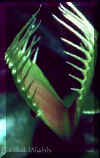Anthophyta- Magnoliophyta-1 |
Anthophyta- Magnoliophyta-1 |
The Anthophyta is often called the Magnoliophyta. They are also called the Angiosperms or Flowering Plants. The designation of Magnoliophyta comes from the most ancestral family in this taxon.
Anthophyta means covered seed. The seed is covered by the Carpel Wall (Pericarp).
There are two major classes commonly known as Dicots (Dicotyledones) & Monocots (Monocotyledones). We do not have the time to distinguish between these two taxa in depth. However, a few noteworthy distinctions will be mentioned.
While there are many important Vegetative adaptations, the most important adaptations are related to sexual reproduction. These include Flowers and Fruits.
Distribution & Abundance
This is the largest and most important plant Division! There are thousands of Genera & Species (200,000).
They have a worldwide distribution and can be found in Virtually all Terrestrial Habitats from the far North to the Tropics. Like most plants, they reach their greatest diversity and abundance in the Tropics.
Some
are found in Fresh Water & a few are found in Marine habitats. They form the Dominant
Components of mostTerrestrial
Ecosystems.
Habit
They can be minute like Lemna, or gigantic like some tropical trees (koa).
They
can be annuals or perennials.
They may be entirely fleshy (herbaceous) or they can be woody shrubs & trees.
They can be Epiphytic, like many Orchids & Bromeliads.
In
aquatic environments that can be floating and/or submerged.
submerged.
There are parasitic and saprophytic species, as well.
They can also be carnivores!!!!
Flowering
plants of agronomic value are the foundation of Civilizations.
They regulate major ecological cycles on the planet!
Many species are cultivated for their beauty, and are the basis for Horticulture.
Some have even become Movie Stars!!!
Is
there any place they can't survive? They  do not live on Glaciers as some bacteria, algae and fungi
can! They can't live in hot springs! They don't live in the open ocean or at the bottom of
the ocean.
do not live on Glaciers as some bacteria, algae and fungi
can! They can't live in hot springs! They don't live in the open ocean or at the bottom of
the ocean.